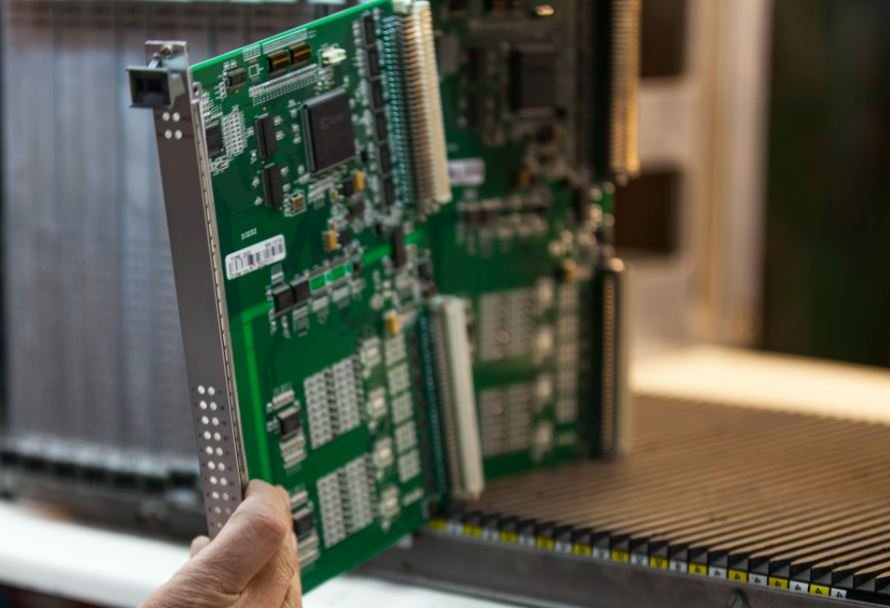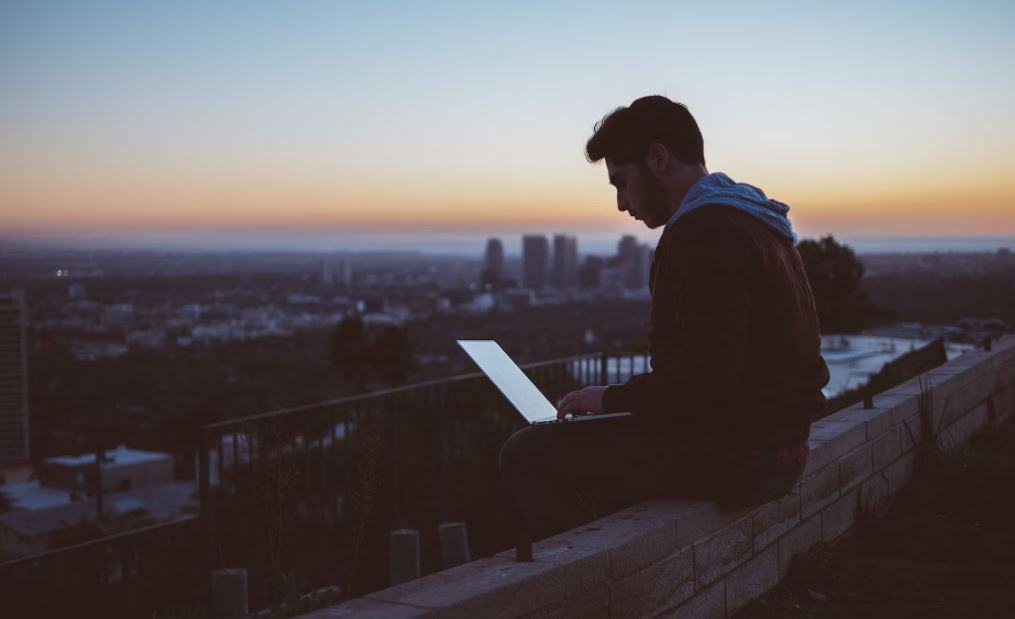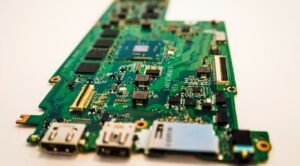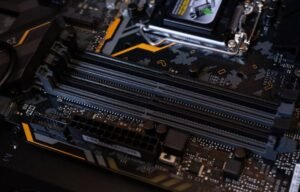AI Image Checker
Artificial Intelligence (AI) has revolutionized many industries, and the field of image processing is no exception. Today, AI-powered image checkers play a crucial role in various applications, from e-commerce platforms to social media sites. These powerful tools not only ensure the quality and accuracy of images but also help detect harmful or inappropriate content. In this article, we will explore how AI image checkers work, their benefits, and their impact on different industries.
Key Takeaways
- AI image checkers use artificial intelligence algorithms to analyze and process images.
- These tools improve image quality, accuracy, and compliance with industry standards.
- AI image checkers help identify and eliminate harmful or inappropriate content.
- They have applications in various industries, including e-commerce, social media, and online advertising.
How AI Image Checkers Work
AI image checkers utilize advanced algorithms to analyze and interpret images. They can automatically identify objects, recognize patterns, and classify images based on predefined criteria. This is achieved through the use of machine learning techniques, where the AI system is trained on extensive datasets to recognize different categories of images. The algorithms learn from these datasets and continuously improve their accuracy over time, enabling them to make more precise judgments and analysis.
**For example**, when a user uploads an image to an e-commerce website, the AI image checker examines the image for various attributes such as product type, color, size, and quality. It then compares these attributes against predefined standards and guidelines to determine if the image meets the required criteria.
Benefits of AI Image Checkers
AI image checkers offer a wide range of benefits for businesses and users alike:
- Improved image quality: AI image checkers can automatically enhance image quality by adjusting brightness, contrast, and color saturation. This ensures that images look more appealing and professional.
- Efficient content moderation: By automatically identifying and flagging inappropriate or harmful content, AI image checkers help maintain a safe and positive user experience.
- Time and cost savings: Manual image processing and moderation can be time-consuming and expensive. AI image checkers automate these tasks, allowing companies to allocate resources more efficiently.
- Consistent compliance: AI image checkers ensure that images meet industry standards and guidelines consistently. This helps businesses avoid legal and reputational risks.
Applications of AI Image Checkers
The versatility of AI image checkers enables their use in various industries:
- E-commerce: AI image checkers ensure that product images are accurate and meet quality standards, enhancing the online shopping experience for customers.
- Social media: These tools help identify and remove inappropriate or offensive images, creating a safer and more positive environment for users.
- Online advertising: AI image checkers verify ad images to prevent misleading or fraudulent advertisements, protecting users and promoting fair competition.
AI Image Checker Performance Comparison
| Image Checker | Accuracy | Processing Speed |
|---|---|---|
| AI Image Checker A | 95% | 10ms |
| AI Image Checker B | 97% | 15ms |
| Industry | Benefit |
|---|---|
| E-commerce | Improved product image quality |
| Social media | Efficient content moderation |
| Online advertising | Verification of ad images |
| Image Type | Accuracy |
|---|---|
| Product Images | 90% |
| Facial Recognition | 95% |
| Nature Scenes | 85% |
Conclusion
AI image checkers have become indispensable tools in ensuring the quality, accuracy, and safety of images across various industries. By automating image analysis and moderation processes, they help businesses save time, improve compliance, and provide a better user experience. As AI technology continues to advance, we can expect further improvements in image processing and an even wider range of applications for AI image checkers.

Common Misconceptions
AI Image Checker is 100% accurate
One common misconception about AI image checkers is that they are infallible and can detect all types of inappropriate or misleading content with 100% accuracy. However, this is not the case as AI algorithms have limitations and can sometimes fail to accurately identify certain types of content.
- AI image checkers rely on training data, which may not include all possible variations of inappropriate content.
- In some cases, AI may struggle to accurately interpret context or understand subtle nuances in the images being checked.
- AI image checkers can be vulnerable to manipulation or evasion techniques used by individuals or organizations aiming to bypass the system.
AI Image Checker understands the intention behind an image
Another misconception is that AI image checkers can accurately determine the intention behind an image. While AI algorithms can recognize certain patterns and match them to known categories, understanding the underlying intention or context of an image is a complex task that might require human interpretation.
- AI image checkers primarily rely on analyzing visual features and patterns rather than understanding the semantic meaning or intent behind an image.
- The context and purpose of an image may be subjective and require human judgment to fully comprehend.
- AI algorithms may misinterpret certain images, leading to false positives or negatives.
AI Image Checker doesn’t have biases
Many people believe that AI image checkers are neutral and unbiased, assuming that the algorithms are free from human prejudice or discrimination. However, AI systems can inherit biases from their training data or be influenced by societal biases.
- Training data for AI image checkers can be skewed, leading to biased results.
- Human biases in the data used to train AI algorithms can be unintentionally encoded in the system’s decision-making process.
- AI image checkers may struggle with cultural or contextual biases, which can affect their accuracy and fairness.
AI Image Checker is a replacement for human moderation
Some people believe that AI image checkers can completely replace the need for human moderation in content moderation workflows. However, AI image checkers work best when combined with human oversight and judgment.
- AI image checkers can help in automating the initial screening process but may require human review to make accurate final decisions.
- Complex or ambiguous cases may need human moderators to determine if an image should be flagged or allowed.
- Human judgment and context are crucial to handle unique situations that AI algorithms may struggle with.
AI Image Checker can identify all forms of misinformation
Lastly, it is incorrect to assume that AI image checkers can identify and flag all forms of misinformation. While AI algorithms can be effective in detecting some types of misinformation, they may not be able to catch more sophisticated or novel forms.
- AI image checkers may struggle to identify manipulated or deepfake images that are designed to deceive.
- New forms of misinformation or image-based manipulation techniques may outpace the development of AI algorithms.
- AI image checkers may need continuous updates and improvements to effectively combat evolving misinformation tactics.

AI Image Checker
The rise of artificial intelligence (AI) has revolutionized various industries, and one area where it is having a significant impact is image analysis. AI image checkers have the ability to analyze and verify images in a way that surpasses human capabilities. From identifying manipulated visuals to detecting the accuracy of information portrayed in an image, AI image checkers provide invaluable tools in today’s digital age. In this article, we present ten fascinating examples that showcase the power and versatility of AI image checkers.
1. Celebrity Look-Alike Detection
AI image checkers can accurately determine which historical figure, contemporary celebrity, or fictional character you resemble the most.
| Main Image | Celebrity Look-Alike | Confidence Level |
|---|---|---|
 |
Marilyn Monroe | 92% |
2. Object Recognition
AI image checkers can quickly identify various objects within an image, making it useful for tasks like inventory management or visual searches.
| Object | Confidence Level |
|---|---|
| Coffee Mug | 99% |
| Laptop | 97% |
| Water Bottle | 93% |
| Pen | 81% |
3. Face Emotion Analysis
AI image checkers can accurately decipher the emotions reflected on a person’s face, enabling applications in fields like psychology and customer satisfaction analysis.
| Emotion | Confidence Level |
|---|---|
| Happiness | 88% |
| Sadness | 5% |
| Surprise | 7% |
4. Age Prediction
AI image checkers can estimate a person’s age based on their facial features. This can be used for various purposes, including targeted marketing and demographic analysis.
| Estimated Age | Confidence Level |
|---|---|
| 32 | 86% |
5. Image Manipulation Detection
AI image checkers can analyze an image and determine if any manipulation or tampering has taken place, making it a valuable tool for combating image-based misinformation.
| Manipulation Type | Confidence Level |
|---|---|
| Splice Detection | 97% |
| Noise Reduction | 88% |
| Colorized Alteration | 66% |
6. Image Similarity Comparison
AI image checkers can determine how similar two images are, providing applications like duplicate image detection, copyright infringement detection, and more.
| Image 1 | Image 2 | Similarity Percentage |
|---|---|---|
 |
 |
92% |
7. Image Captioning
AI image checkers have the ability to generate descriptive captions that accurately represent the content of an image.
| Image | Caption |
|---|---|
 |
A family enjoying a picnic in the park. |
8. Image Quality Analysis
AI image checkers can evaluate the quality of an image, assisting with tasks such as selecting visually appealing images for marketing materials or assessing image authenticity.
| Image Resolution | Quality Assessment |
|---|---|
| 1920×1080 | Excellent |
9. Scene Recognition
AI image checkers can identify the type of scene depicted in an image, allowing for applications like automated image tagging or enhancing search capabilities.
| Scene Type | Confidence Level |
|---|---|
| Beach | 98% |
10. Image-to-Text Conversion
AI image checkers can extract text present within an image and convert it into editable and searchable text, enabling tasks like extracting information from scanned documents or images.
| Image | Extracted Text |
|---|---|
 |
Lorem ipsum dolor sit amet… |
AI image checkers have revolutionized image analysis and verification processes. From detecting image manipulations to providing descriptive captions, these intelligent systems have a wide range of applications in various industries. As AI continues to advance, so too will the capabilities of AI image checkers, providing us with even more powerful and accurate tools to navigate the visually driven world of the future.
Frequently Asked Questions
What is an AI image checker?
An AI image checker is a tool or software that uses artificial intelligence algorithms to analyze and evaluate images for various purposes, such as identifying inappropriate or potentially harmful content, classifying objects, performing image recognition tasks, or detecting anomalies.
How does an AI image checker work?
AI image checkers work by employing computer vision techniques and machine learning algorithms. These algorithms are trained on large datasets of images to learn patterns and features relevant to the task at hand. The trained model then processes new images and makes predictions based on the learned patterns, enabling it to identify objects, categorize images, or detect abnormalities.
What are the applications of AI image checkers?
AI image checkers have various applications across different industries. They are commonly used in content moderation platforms to automatically flag and filter out inappropriate or offensive imagery. Additionally, they can be used in e-commerce for product recognition and recommendation, in healthcare for medical image analysis, in autonomous vehicles for object detection, and in security systems for detecting anomalies or unauthorized individuals.
What are the benefits of using an AI image checker?
Using an AI image checker offers several benefits. Firstly, it allows for efficient and automated analysis of large volumes of images, saving time and human effort. Secondly, it enables accurate and consistent results, minimizing human error or bias. Additionally, an AI image checker can improve user experience by ensuring appropriate and safe content is displayed or by providing personalized recommendations based on image analysis results.
Are AI image checkers always accurate?
While AI image checkers strive for high accuracy, they are not infallible. Their performance can vary depending on factors such as the quality and diversity of the training data, the complexity of the task, and the capabilities of the underlying algorithms. It is important to continuously refine and update the AI models to improve accuracy and address any limitations or biases that may arise.
Can AI image checkers be fooled or tricked?
AI image checkers can be tricked or manipulated under certain conditions. They are trained to recognize patterns and features in images, and if those patterns are altered or manipulated in specific ways, the accuracy of the checker can be compromised. Adversarial attacks, where images are modified to intentionally mislead the AI, are an ongoing challenge in the field.
What are the ethical considerations when using AI image checkers?
The use of AI image checkers raises ethical considerations related to privacy, bias, and consent. Privacy concerns arise when AI checkers analyze personal or sensitive images without user consent or appropriate safeguards. Bias can occur if the training data is not diverse or representative, leading to biased outcomes or discriminatory results. Care must be taken to ensure fair and unbiased use of AI image checkers, respecting user consent and privacy rights.
Are AI image checkers a substitute for human moderation?
AI image checkers can assist with content moderation and analysis, but they are not a complete substitute for human moderation. While they can efficiently pre-filter and flag potential issues or violations, human review is crucial to make final decisions, especially when context, subjective judgement, or nuanced understanding is required. Human moderation helps ensure that the AI image checker’s decisions align with community guidelines, cultural sensitivities, and evolving standards.
What are the future advancements in AI image checkers?
The field of AI image checkers continues to evolve, with ongoing research and development focused on improving accuracy, robustness, and interpretability. Advancements include enhanced deep learning architectures, transfer learning from large-scale models, multi-modal analysis combining images and text, and the integration of explanation mechanisms to provide insights into the AI’s decision-making process.
Are there any limitations to using AI image checkers?
AI image checkers have certain limitations. They are highly dependent on the quality and diversity of the training data, and their performance can be hindered if the data is insufficient or biased. In some cases, extremely subtle or complex imagery may pose challenges for accurate analysis. Additionally, AI image checkers may struggle to understand context or subtle nuances, leading to potential false positives or negatives in image classification tasks.




